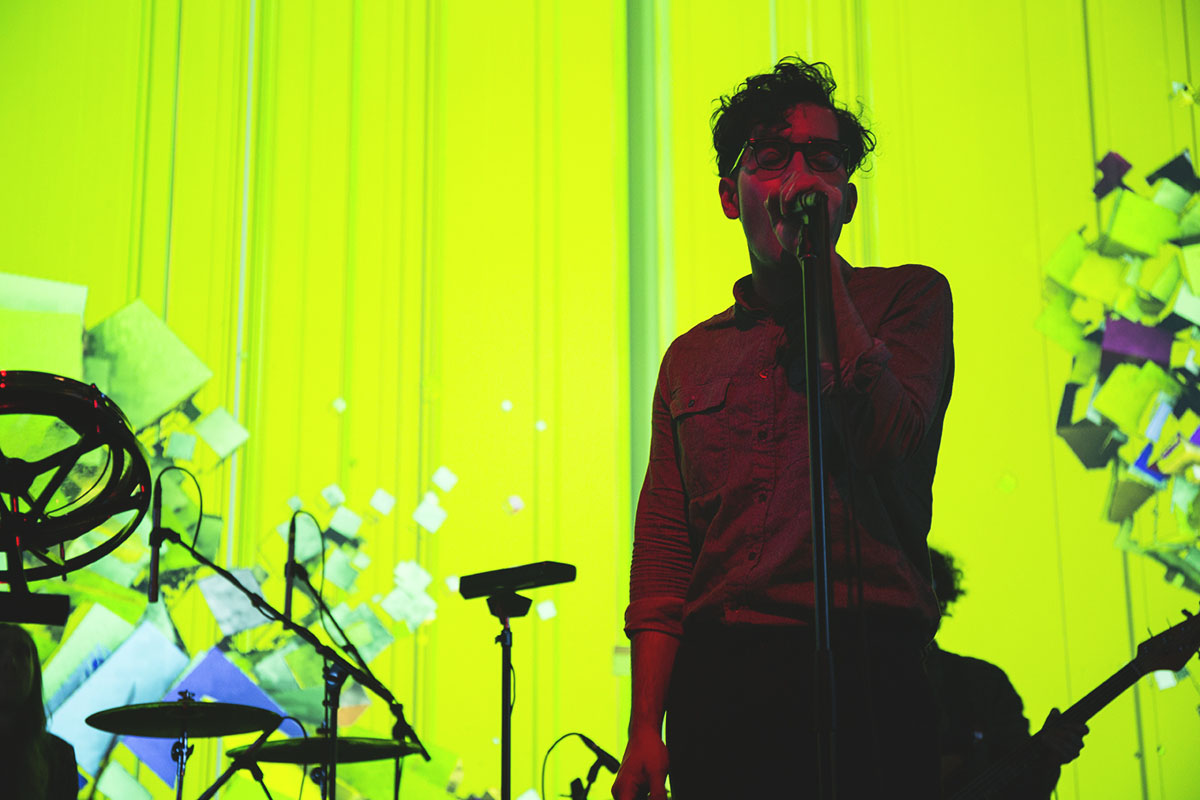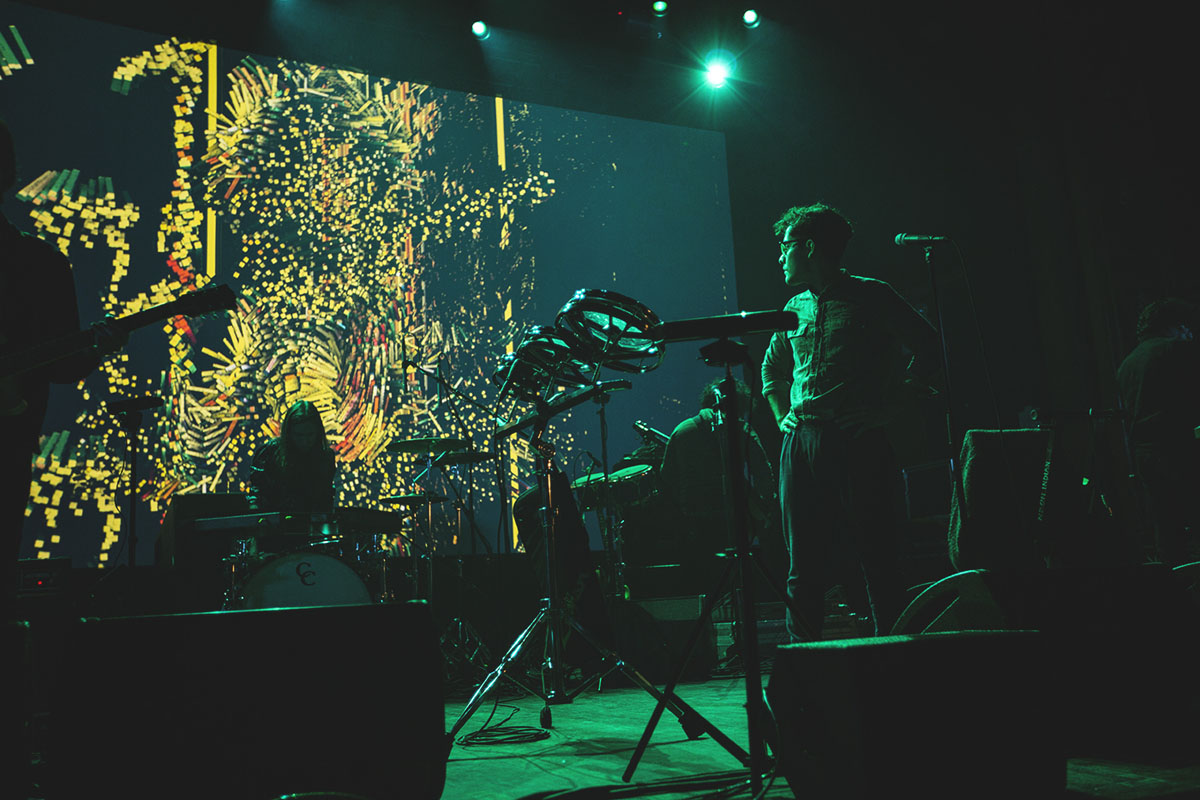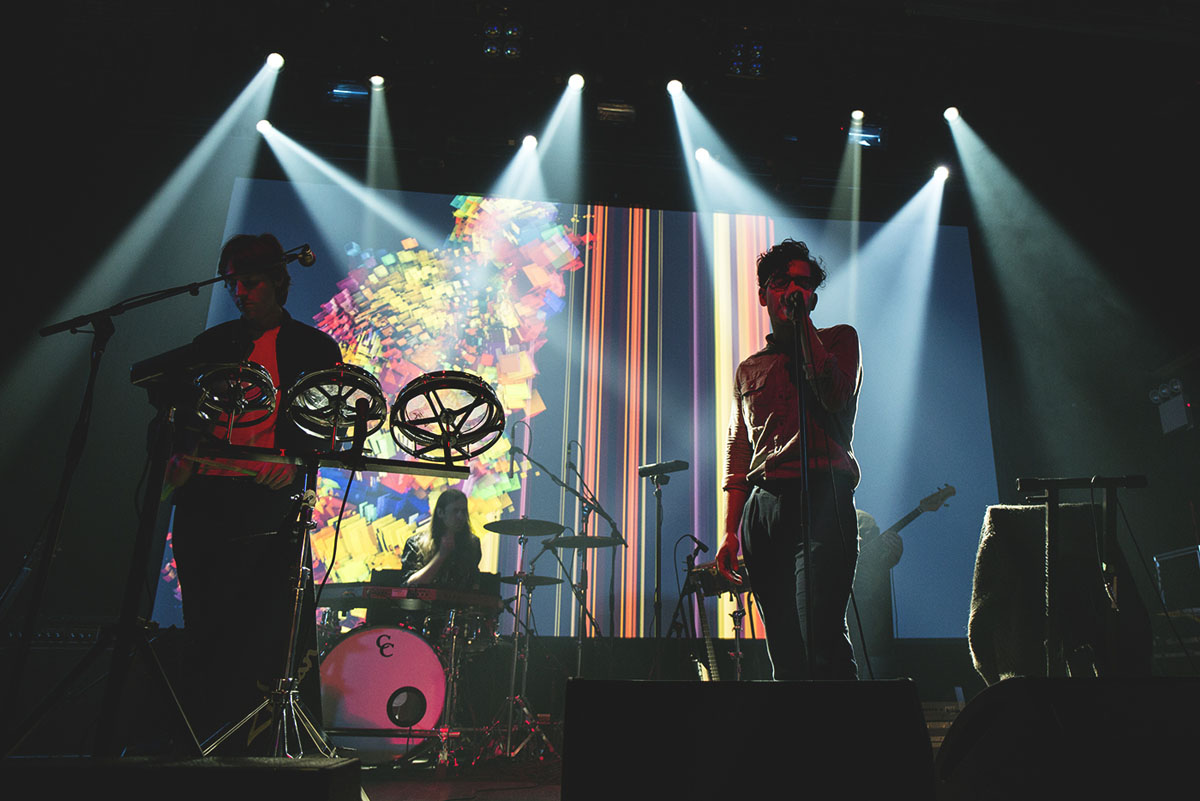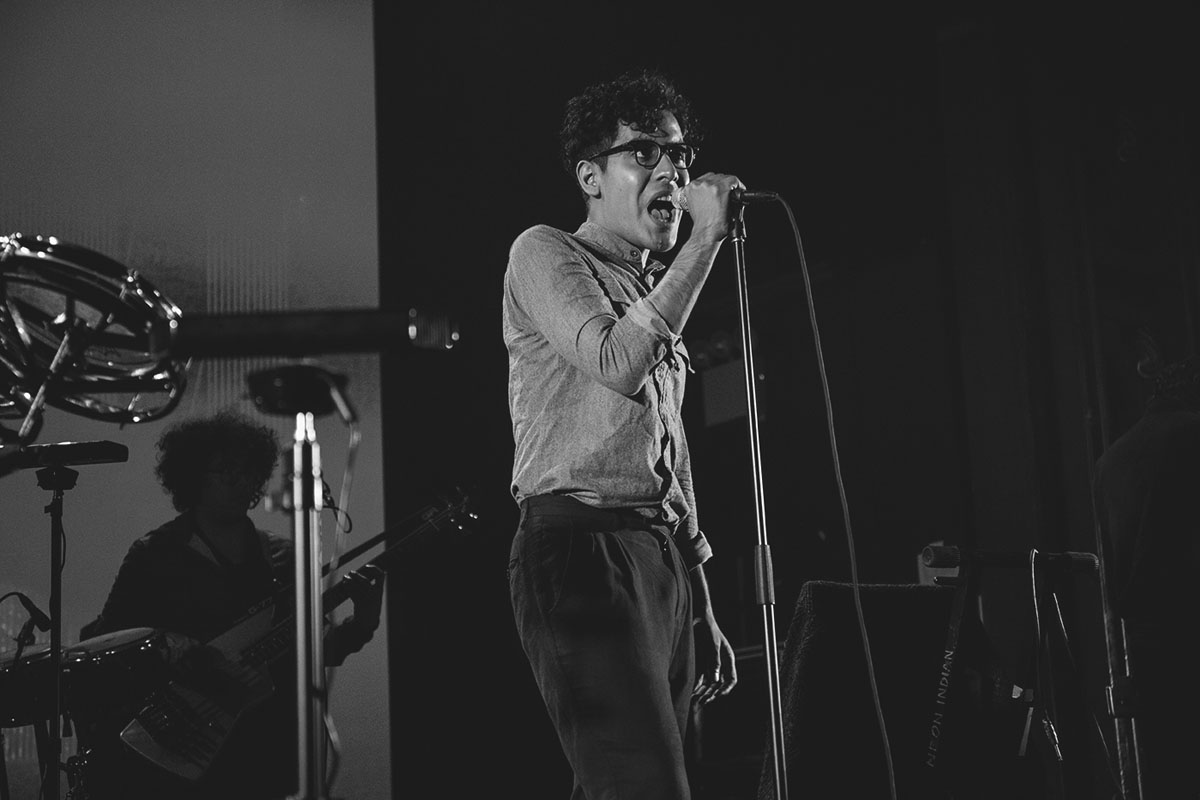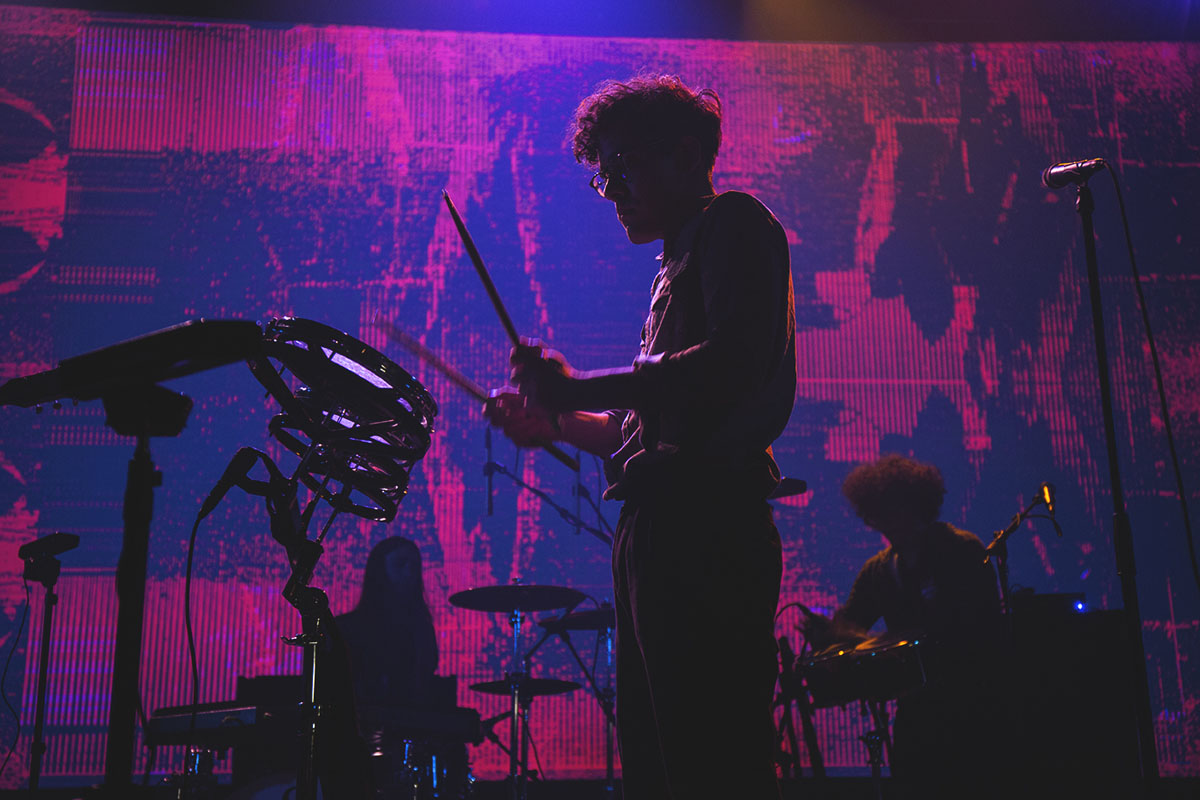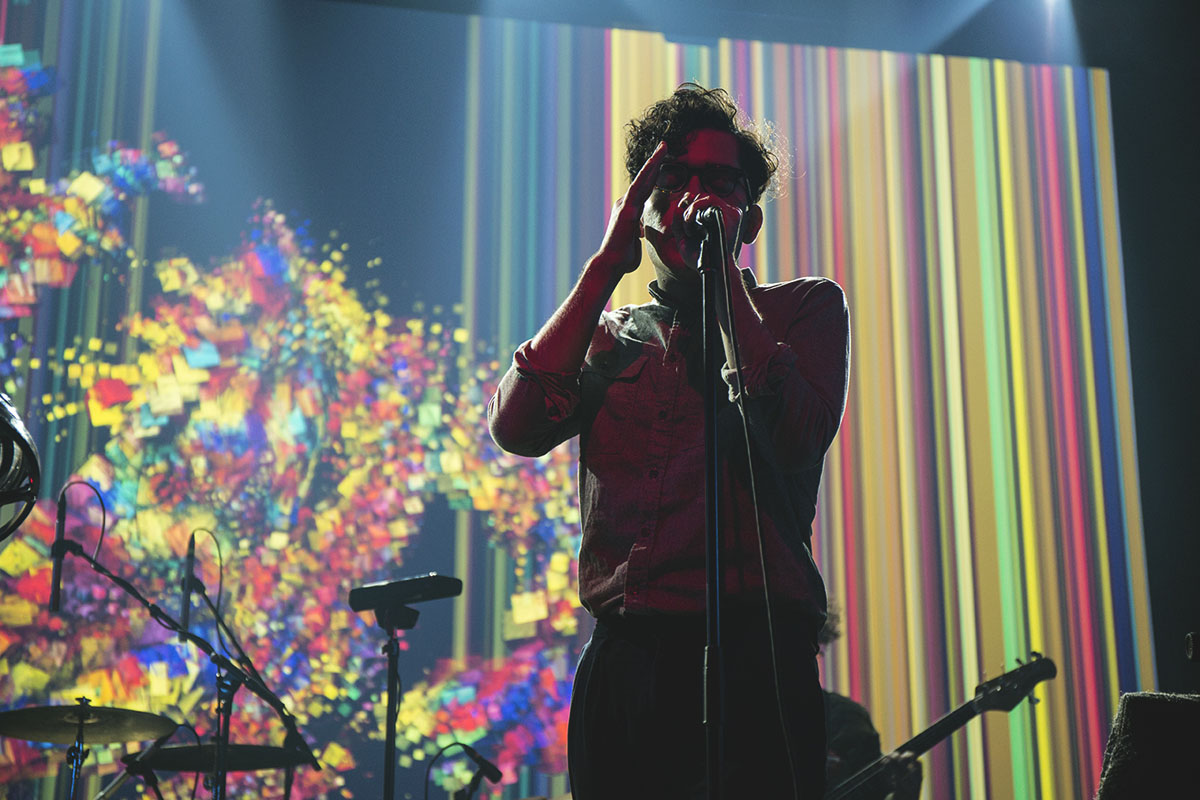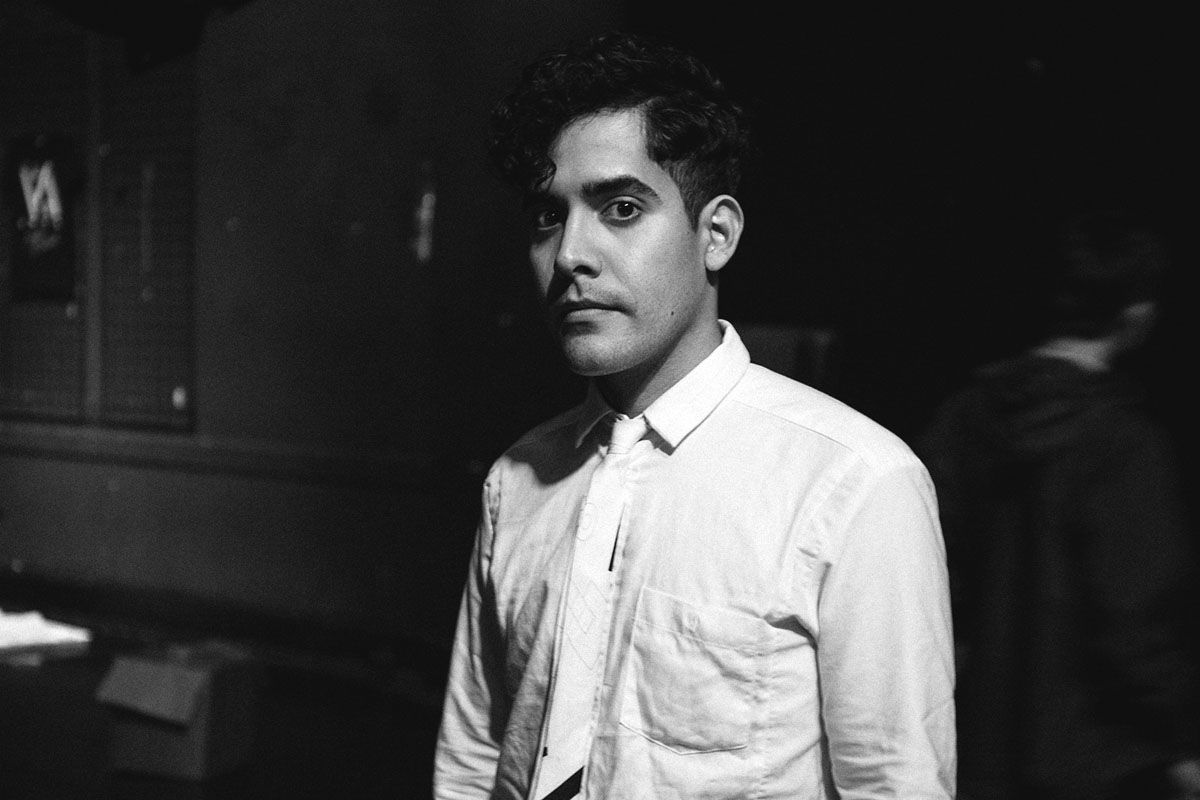Words and Photography By Francesca Beltran
Three hours before the show I walked into the main stage of Webster Hall in New York, where Neon Indian’s frontman and composer, Alan Palomo was finishing the last tweaks of his sound check. This time, the electronic musician was not only occupied with the band’s acoustics, but also with testing all the elements (screens, cameras, sensors and wires) that conform the new immersive live experience he designed in collaboration with Microsoft.
Last night’s concert at CMJ Music Marathon marked the beginning of his tour to promote his most recent record, VEGA INTL. Night School (coming out October, 16), and Steve Milton from Listen, who conceptualized the collaboration, was there to guide us through the show’s preview. As he eloquently explained, through Kinect sensors Microsoft connects with all five band members on stage and transforms their movements into the colorful images that appear in real time on the gigantic screen. “We are looking to work with very experimental, forward-thinking musicians and artists,” said Milton. “With Neon Indian, they were really into taking their live show to the next level to support this album and so we started kicking around some ideas over the summer and brought the team together to realize the vision that came from that session. That’s how this whole thing happened.”
As I watched the band rehearse, I began to see how their movements and the sound of their music clearly reflected on the abstract visuals and the dynamic lightshow behind them. When the preview was over, Palomo joined us off-stage to share his motivation to get involved in such an ambitious project. “We’ve always incorporated some visual component, and we’ve always tried to make it something that feels like a symbiotic relationship between the music that we’re playing and the visuals. Cause in so many cases, you pop in a dvd and its just like the audience starts watching TV in the middle of your set,” he said. “The one thing that we hadn’t gotten to yet was the idea of the actual performance being something that could be manipulated and reinterpreted visually.”
Famous for being open to experimentation and collaborations throughout his career, it’s not at all surprising that Neon Indian is taking this new step towards redesigning the live experience for fans, particularly from a visual standpoint. When asked about his interest in the visual component of his music, Palomo immediately points to his background in film. “I studied film and when I started making music in college I didn’t have any skillset, so for me the only way I could communicate ideas or my approach to look at things was always with film references,” he said. “This record in particular was meant to have a cinematic narrative.”
And this was evident in last night’s show; with his dynamic music, immersive visuals and extraordinary dance moves, Palomo brought his entire set list to life and transformed a live music show into a very engaging sensorial experience for every person in the room. Neon Indian’s show proved once again that when art meets technology, there really are no boundaries for creative expression.


